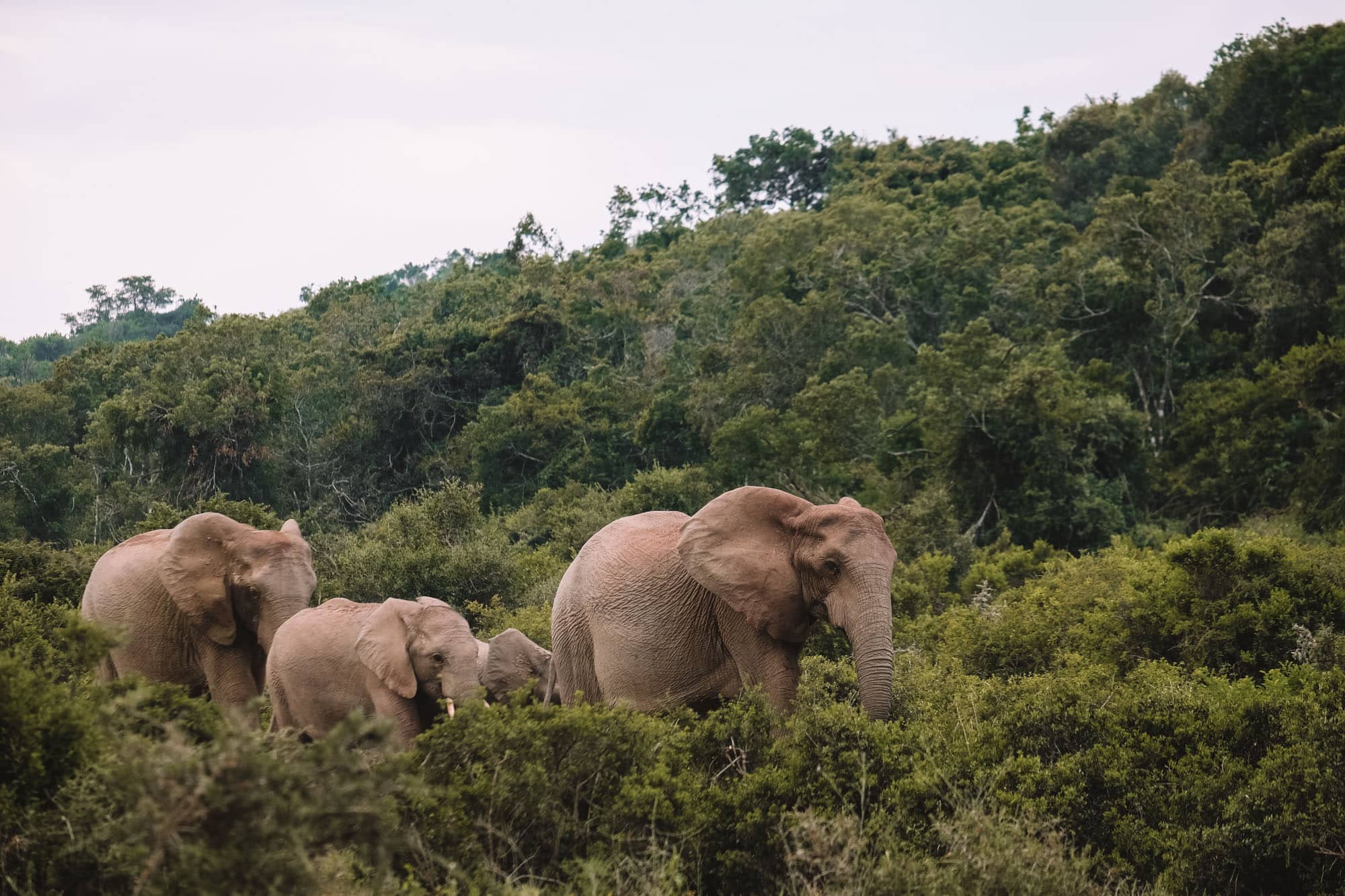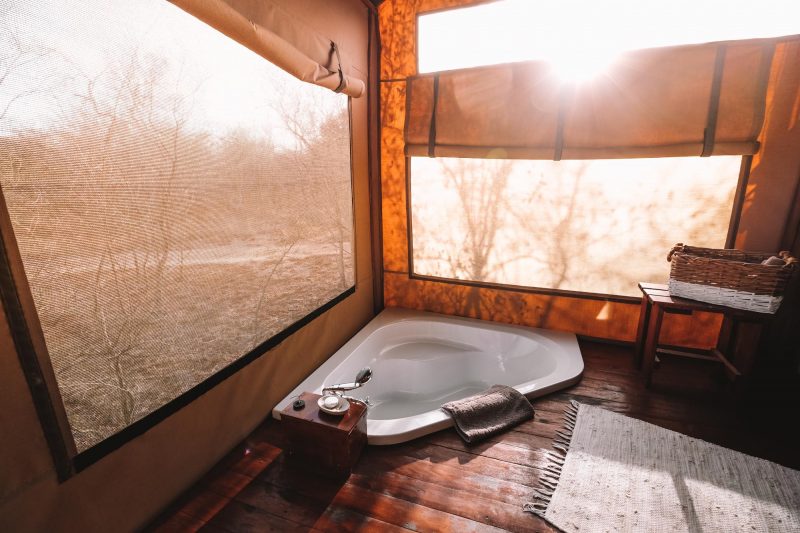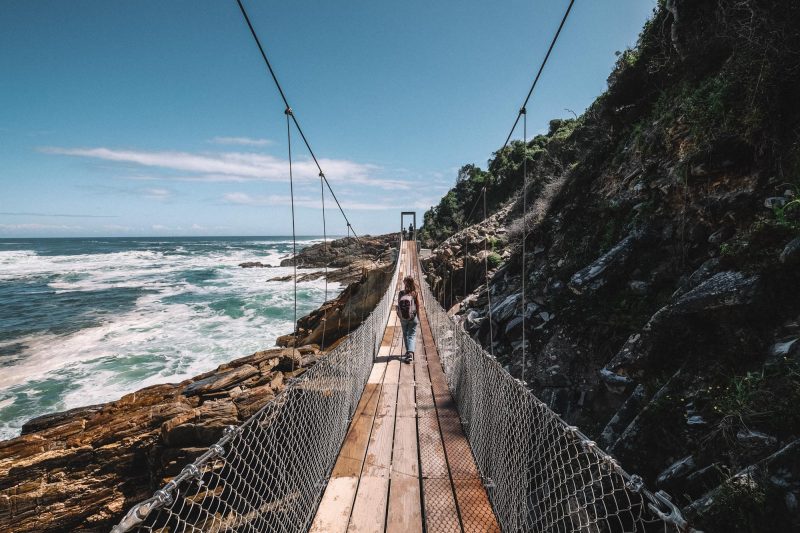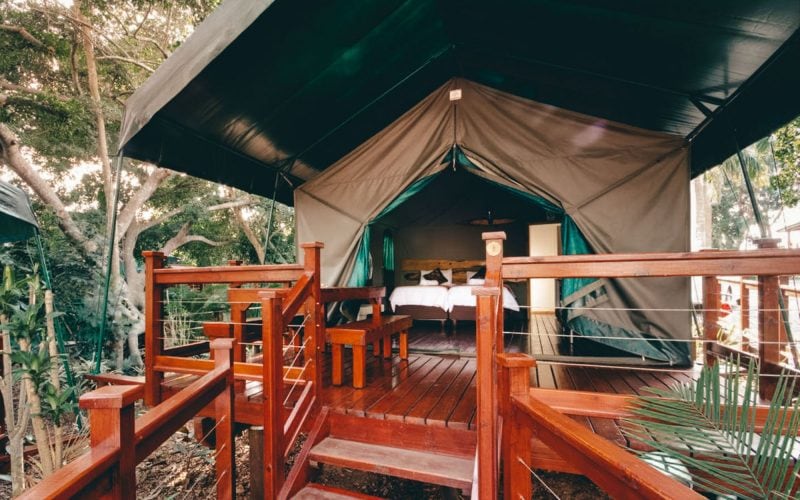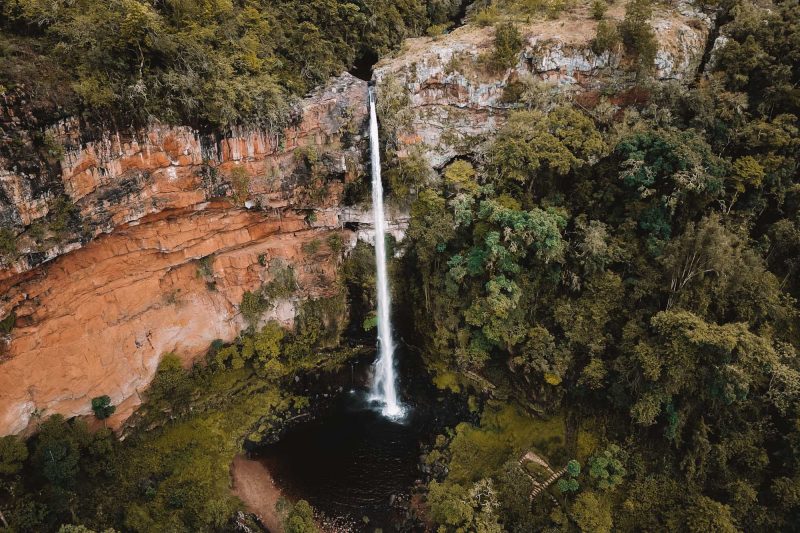Love elephants? Then Addo Elephant Park is the place for you. As the name suggests, this park is home to a large number of elephants. It is the third largest national park in South Africa and, in addition to the many elephants, offers a diverse range of wildlife. You can easily explore Addo Elephant Park on your own with a rental car. Curious about a logical itinerary through the park or the history of Addo Elephant Park? Continue reading below.

The History of Addo Elephant Park
Addo Elephant Park has a fascinating and remarkable history. This national park would have never existed if they hadn’t decided to exterminate all the elephants in this region in 1919. This decision was made because the elephants could roam freely throughout the Eastern Cape province, causing conflicts with the local farmers in the 19th century. The farmers called on the government to shoot the elephants. Many elephants perished, but eleven brave elephants managed to escape death. Years later, in 1931, a national park was established to protect these elephants. They have thrived and today, there are over 600 elephants living in Addo Elephant Park. So, you would have to be extremely unlucky not to encounter elephants here.


Spotting Wildlife from Your Car
The roads in Addo Elephant Park are well-maintained, making it enjoyable to drive through the park on your own. Go early in the morning and make sure you have a full tank before entering. If you encounter elephants, always give them enough space. Don’t get too close, and if an elephant approaches your car, remain calm, avoid excessive movement, and definitely don’t scream or honk. Besides elephants, you can spot many other animals. There’s even a chance of seeing the entire Big Five! Unfortunately, we weren’t that lucky. The roads in Addo are mostly surrounded by dense bushes, limiting visibility and making wildlife spotting a bit more challenging. Therefore, the best chance to spot animals is at the waterholes. Especially on hot days, entire elephant families gather there to bathe and drink.
Note: Addo Elephant Park is also home to the protected dung beetle. They are often found on elephant dung lying on the road, so never drive over it. During our visit, we were told that dozens of dung beetles had been run over in the preceding days.


The Itinerary through Addo Elephant Park
To see as much of Addo Elephant Park as possible in one day, we recommend entering through Addo Main Camp. From here, take the southern itinerary towards Matyholweni Gate. Don’t exit the park through this gate; instead, turn around and drive back towards Addo Main Camp. Along the way, there are several loops you can take, so choose different loops on the outbound and return journeys. If you download the South Africa map on the app maps.me, you can navigate offline. This app indicates all the loops and waterholes. You can safely get out of the car at “Jack’s Picnic Site” for a meal and restroom break. With these stops, you’ll spend about 5 to 6 hours on this itinerary. If you’re up for further exploration, you can also take a longer loop towards the east from Addo Main Camp.

Where to Stay in Addo?
Just outside Addo Elephant Park is the village of Addo, and in the surrounding area, you’ll find many accommodations. For a unique overnight stay, we recommend Addo Wildlife Lodge and Addo African Home. Both lodges offer idyllic cottages surrounded by nature, with animals such as impalas roaming around. Both lodges have a swimming pool and serve delicious food in their restaurants. Another great option is Gerald’s Gift Guest House. This B&B is located in a green oasis with a beautiful garden filled with flowers and unique plants. Of course, there’s also a lovely swimming pool, allowing you to relax and enjoy the tranquility.
 Addo Wildlife Lodge Addo Wildlife Lodge |
 Addo African Home Addo African Home |
 Gerald’s Gift Guest House Gerald’s Gift Guest House |
